By Joe Wallis
Many militaria collectors can trace the roots of their hobby to their childhood encounters with toy soldiers. For American kids in the 1930s and 1940s, this may have been with three-inch-tall American-made Manoils or Barclays from the local dime store. Along with Marx tanks, they could do a lot of imaginary damage from trenches dug in the backyard.
Perhaps they even led some of us to learn about reenacting a battle or two. Certainly, many militaria collectors include military toys in the inventory of their collections.
Many varieties of toy soldiers were available during that time period, including composition soldiers from Germany along with their solid lead Heyde brothers (see Military Heritage, November 2013), as well as Lucotte and Mignot lead soldiers made in France. Sold worldwide for more than 100 years were the highly popular, gloss-painted, hollow-cast figures from England aptly named for their founder William Britain. The institutional history of Britains Limited is similar to that of many other 19th-century businesses. Common elements include family ownership, new ideas for production and marketing, wise business moves, and good luck.

William Britain Sr. (1831-1907) was born in Birmingham. In the 1871 census he identifies himself as a toy maker, whereas before he was listed as a brass finisher. By 1874, he had moved his family to Nugent House at 28 Lambton Road in the North London suburb of Hornsey Rise. William Britain Sr., as well as his eldest son, William Britain Jr. (1859-1933), possessed great ingenuity and an aptitude for designing clever mechanical toys. Among these devices were a sailor who tipped and donned his cap when a coin was placed in a collecting plate, an equestrienne who could jump over a bar and land again upon her horse’s back with the aid of interconnecting gears, the popular London Road Roller model powered by a flywheel arrangement, and a tea-drinking, clockwork Chinese Mandarin patented in 1884. By the 1891 census, William Britain Sr., his wife, and their five sons and two daughters no longer resided at the Lambton Road house, having been successful enough to move to newer North London residences. The house at 28 Lambton Road and its entire block became a toy factory that was in use until 1968.
However well made their clever mechanical contrivances were, their intricacy and cost limited their sales, and this large family had to explore means of expanding its customer base. William Britain Jr. introduced the process of hollow casting toy lead soldiers to broaden the firm’s clientele. The company issued its first model of this kind, a mounted English Life Guard, in 1893.
When the firm began manufacturing toy soldiers, German-made flats and solid, full, or semi-round toy soldiers dominated English stores. Britains was able to supplant these foreign figures by cutting production expense, maintaining a uniformity of scale, continually introducing a variety of new items complementary to previous issues, devoting careful attention to authenticity, and upholding a standard of quality and excellence that was recognizable and reliable. As a result, Britains became the most prolific and accepted toy soldier maker in the world. In contrast to the figures produced by the Germans, Britains’ method of hollow casting allowed enhanced detail and more realistic anatomy. The method not only saved metal, but also reduced shipping costs because the weight of the hollow-cast soldier was less than that of a solid figure. These advantages enabled Britains to undercut the prices of its competitors’ imported goods.
The entire enterprise was very Victorian. From the time it was established to the 1940s, each payday involved counting out cash into each employee’s hand, and the work week included a half day on Saturday. If a worker was 15 minutes late, he was docked an hour’s pay; if more than 15 minutes late, he was sent home without pay. The company fired workers who were repeatedly tardy. However, as documented by an article in The North London Press titled “Britains soldiers are ready for 1955 call-up,” many employees worked at Britains for 45 to 50 years, and a common means of being hired by Britains was to have relatives already employed there.
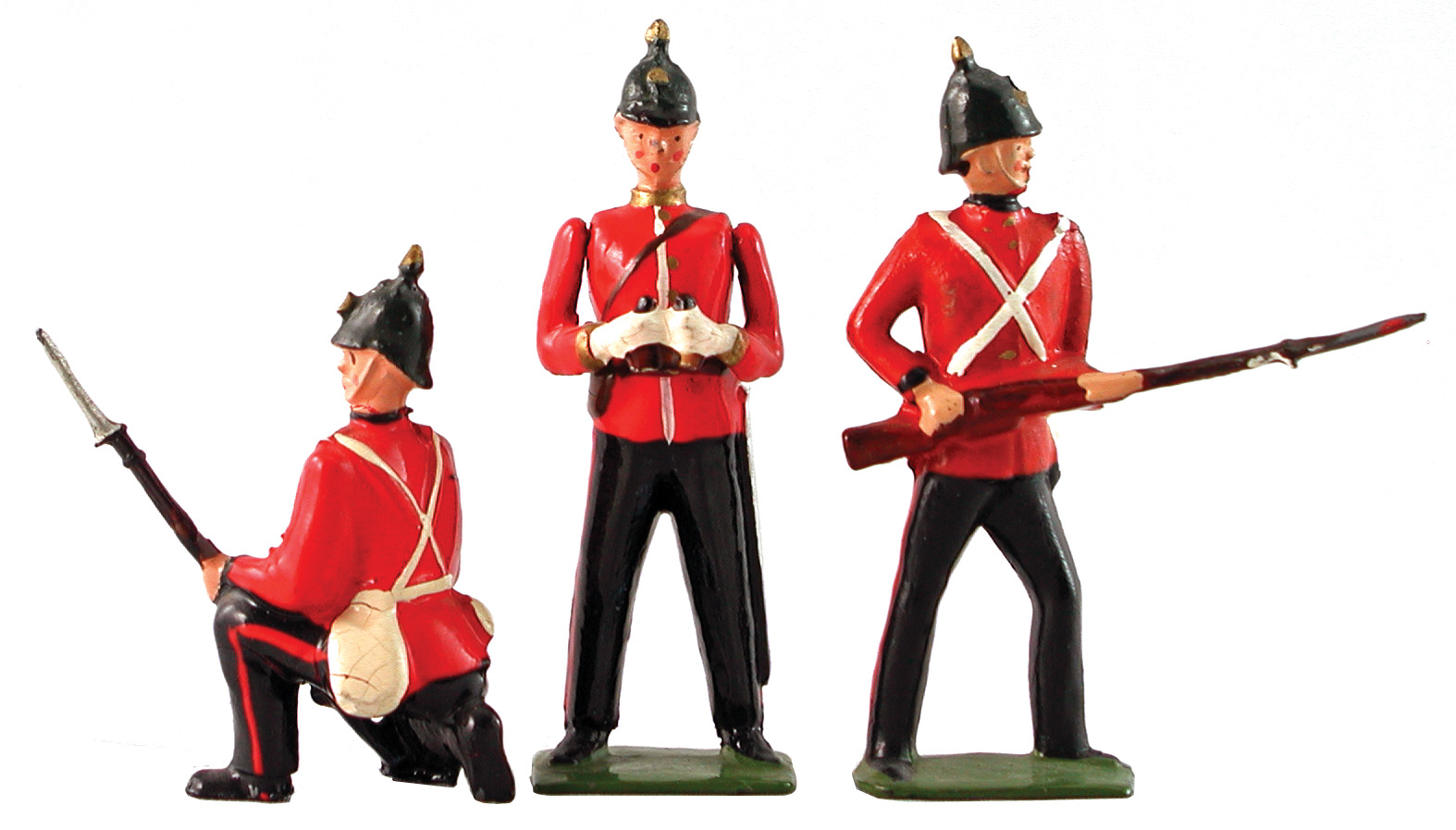
Britains made most of its pieces in 1/32nd scale so that a six-foot-tall man was represented by a toy figure just over two inches or 54 mm high. The utility of this consistent size was that compatible additions to a child’s army, or to an adult’s collection, could be made readily. Britains carefully researched the correct uniforms, drill positions, and historical backgrounds of the models to be produced. Incredible detail was present on the early figures; for example, trouser stripes and medals were often incorporated into the mold itself. Facings, plumes, and other uniform details were almost always represented by Britains more fully than by other companies. Valise packs and Slade-Wallace equipment were depicted on Britains models of the 1890s, and then updated over the years with first webbing equipment and service dress, then battledress, and finally No. 1 dress uniforms. This inventory of correctly costumed British regiments was definitely a factor in successfully competing with foreign-made troops to capture the English toy market. The emphasis on accuracy also benefited Britains by appealing to military history enthusiasts and adult collectors. Not only were the initial figures based on extensive research, but the firm continually tried to refine its products.
Typically, Britains came five or eight to an illustrated box; of course, there were larger, more elaborate Britains sets available, such as an 83-piece display box depicting the ceremony of the Changing of the Guard at Buckingham Palace. These were the toys of boys’ dreams, but they also embodied history. It was necessary for the firm to continually conceive of new poses and to represent regiments and types not previously offered. If they had not been able to introduce new lines on a consistent basis over a long period of time, the public would have lost interest or turned to competitors’ products.
In the late 19th century and early 20th century, daily newspapers read by an increasingly well-educated public, as well as the early newsreels shown at the new cinemas, focused attention upon current events, including colonial campaigns and clashes in foreign lands. Such news stories were often reflected in the firm’s catalog in very short order; examples that come to mind are toy soldiers of Kitchener’s reconquest of the Sudan, the Spanish-American War, the Second Boer War, the Russo-Japanese War, the Balkan Wars, and much later Mussolini’s invasion of Ethiopia. It was necessary for Britains to research the uniform and to decide on an appropriate pose before designing the molds. For this reason, the company maintained a reference library of books and prints to go to for ideas when designing a new figure.
A frequent source of inspiration for Britains was the work of Richard Simkin, a prolific military artist. Between January 7, 1888, and September 6, 1902, he drew 178 chromolithograph prints depicting every regiment of the British Army along with Yeomanry regiments and many colonial units. They were published monthly in The Army and Navy Gazette. Britains based many early figures, such as a 12th Lancer officer turned in the saddle from Set 2169, on the Simkin print of a 5th Lancer officer that inspired it. Similar Simkin print inspirations appeared for the Household Cavalry, Hussar, Dragoon, and Dragoon Guards Officer on a Rearing Horse.
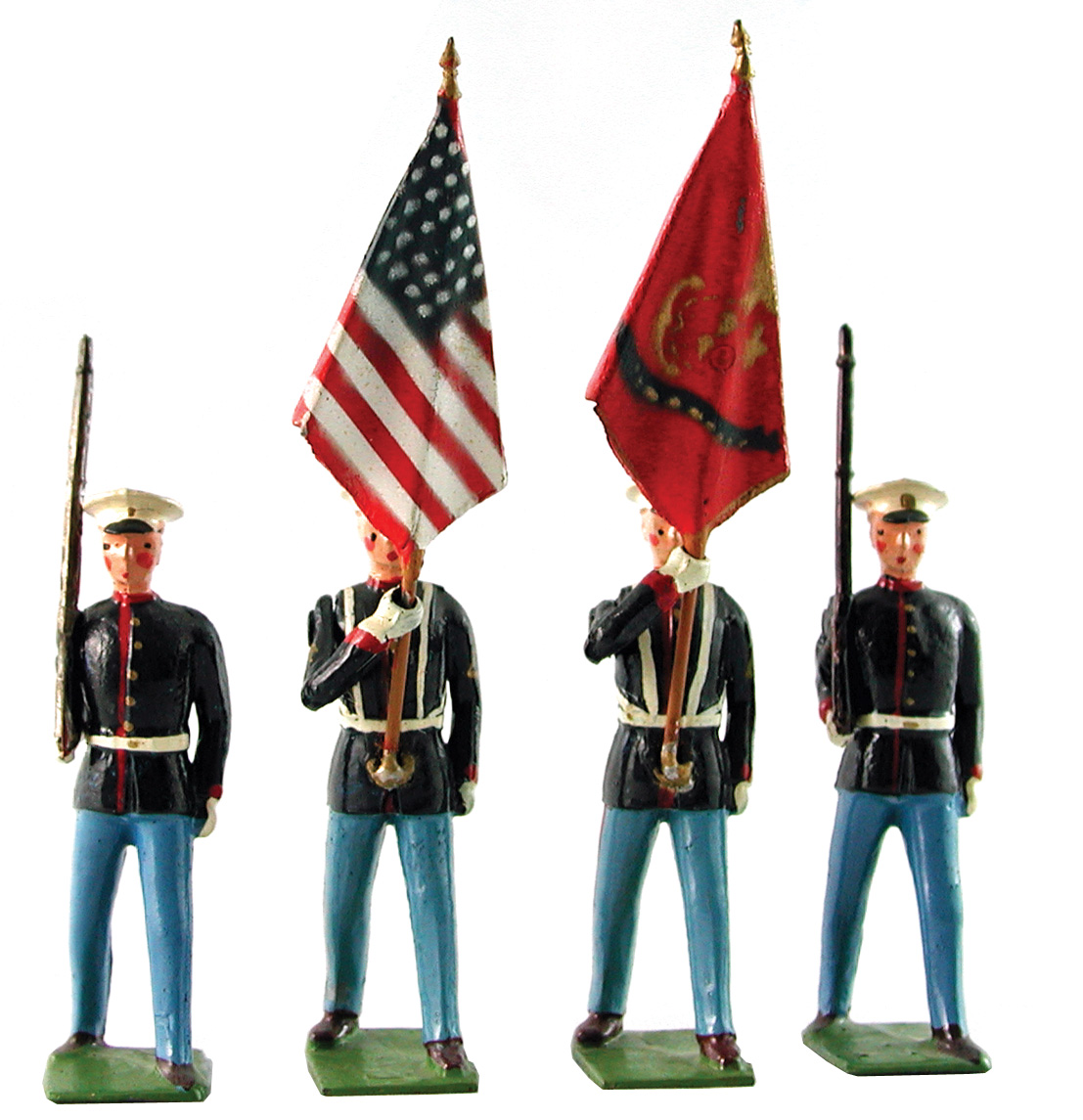
Britains clearly used Simkin’s prints as the basis for the Somerset Light Infantry of Set 17, which were standing on guard or kneeling to receive cavalry with fixed bayonets in the classic British square formation. Britains’ range extended well beyond the British Empire; its stock included dozens of foreign troops such as Argentine Military Cadets, Danish Guard Hussars, Montenegrin Infantry, and Zulu Warriors. Britains soldiers carried accurately modeled rifles and served correctly modeled artillery.
The firm also enhanced the appeal of its soldier figures with the artwork done by Fred Whisstock for the box lids of its sets. Battle honors for the British regiment contained in that box were often included as part of a Whisstock label. He designed 150 box labels between 1908 and 1930. Some of his labels were used by Britains as late as 1959 (for example, Set 163, Boy Scout Signallers), but most were replaced by standardized labels such as Armies of the World circa 1933, and then Regiments of All Nations in 1949. This saved the cost of designing an individual label for each set.
Following the death of William Britain Sr. in 1907, the firm was transformed from a proprietorship (William Britain and Sons) to a limited liability corporation whose stock was controlled primarily by members of the family. A Paris office was established from 1905 to 1923 (when it was closed “for failure to run properly”). Exports to Europe, the British Colonies and Dominions, and the United States increased greatly. World War I diverted most of the firm’s efforts to making shrapnel, but Britains only completely shut down toy production for a little over a year from late 1917 to 1918. A few of the mechanical toys that had been the initial focus of the firm still appeared in the 1915 Britains catalog but ceased to be made shortly thereafter.
A second factory on Sutherland Road in Walthamstow in East London was built in the late 1920s, and a 1929 article titled “A Record of Achievement” in the Toy Trader magazine reported that more than 20 million models a year were being produced by a trained staff of 450 persons. In July 1941, the British government ordered the company to suspend the production of toys and concentrate solely on making munitions parts, such as grenade pins.
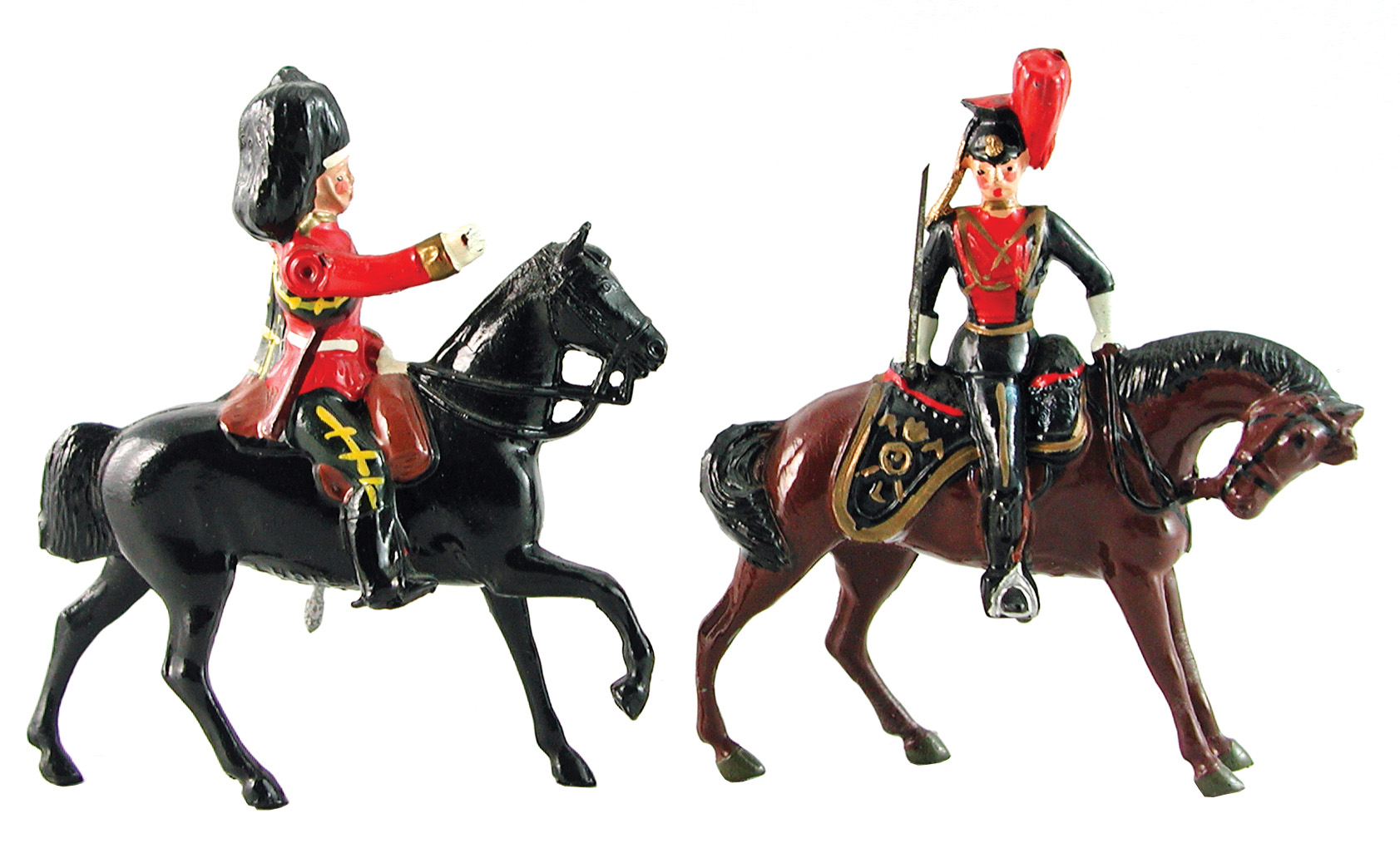
The company distributed its first postwar catalog in December 1945. Limited numbers of sets that had all been available prewar were sold on an export basis as Great Britain desperately needed foreign exchange to pay its debts and to import food.
Rationing ended as the economy improved by the early 1950s. Queen Elizabeth II’s coronation in 1953 was the occasion for new Britains sets in No. 1 dress uniform. While production increased and uniforms were modernized, the colors and types of many historical uniforms were maintained; modern artillery and vehicles such as a magnificent model of a Centurion tank were added to the horse-drawn vehicles that continued unchanged in the catalog. The rising cost of lead and the old-fashioned, piecework labor (e.g., hand painting and casting) required to produce the traditional lead figures prompted the firm to turn to plastic instead of lead and to again restrict the sale of lead soldiers to export markets.
The final year for the traditional lead soldiers was 1966, when only 95 sets were listed in the catalog. In 1968 the firm moved the last remaining operations out of Lambton Road after 94 years connected with that location. In the 1970s and later, Britains restarted production of less detailed lead soldiers without the traditional hand painting and casting that had been the hallmark of its earlier years. The firm was sold to a mining conglomerate in 1984 (91 years after making its first toy soldier). It has been sold and resold since, and Britains are manufactured in China today.
Britains models manifest military history and an attention to detail and accuracy that continue to attract collectors decades after their manufacture. These same traits will also appeal to many collectors of militaria.
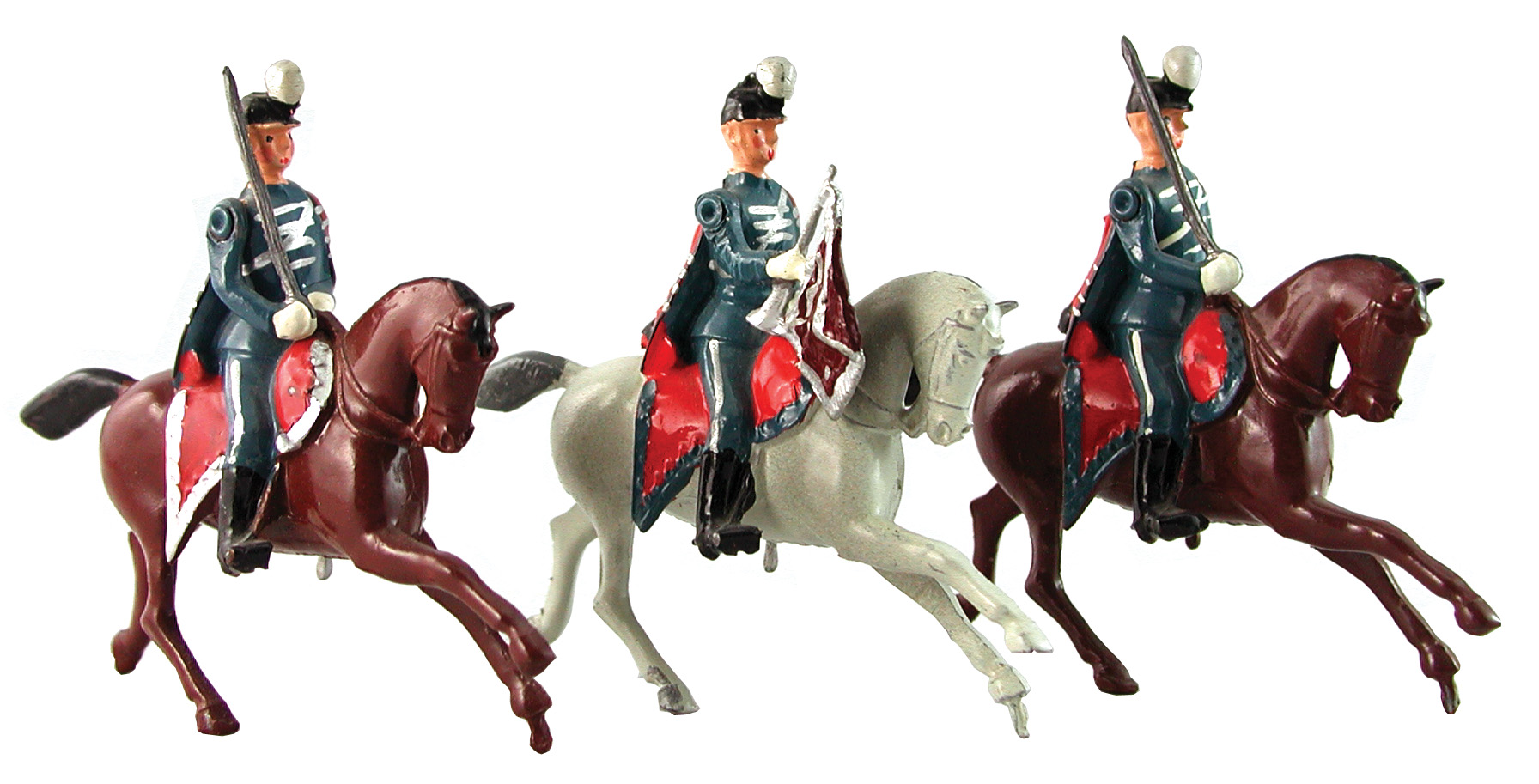
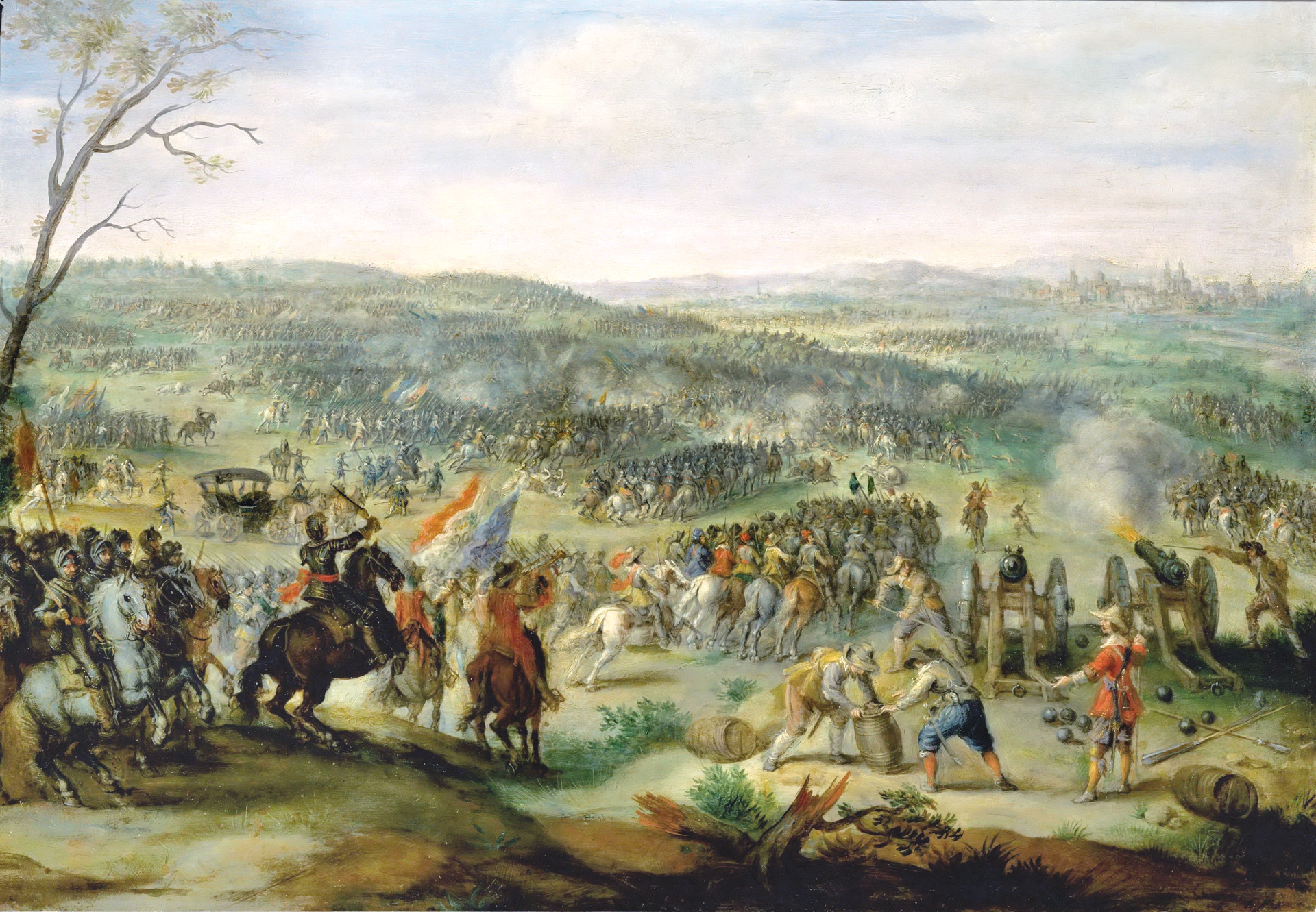
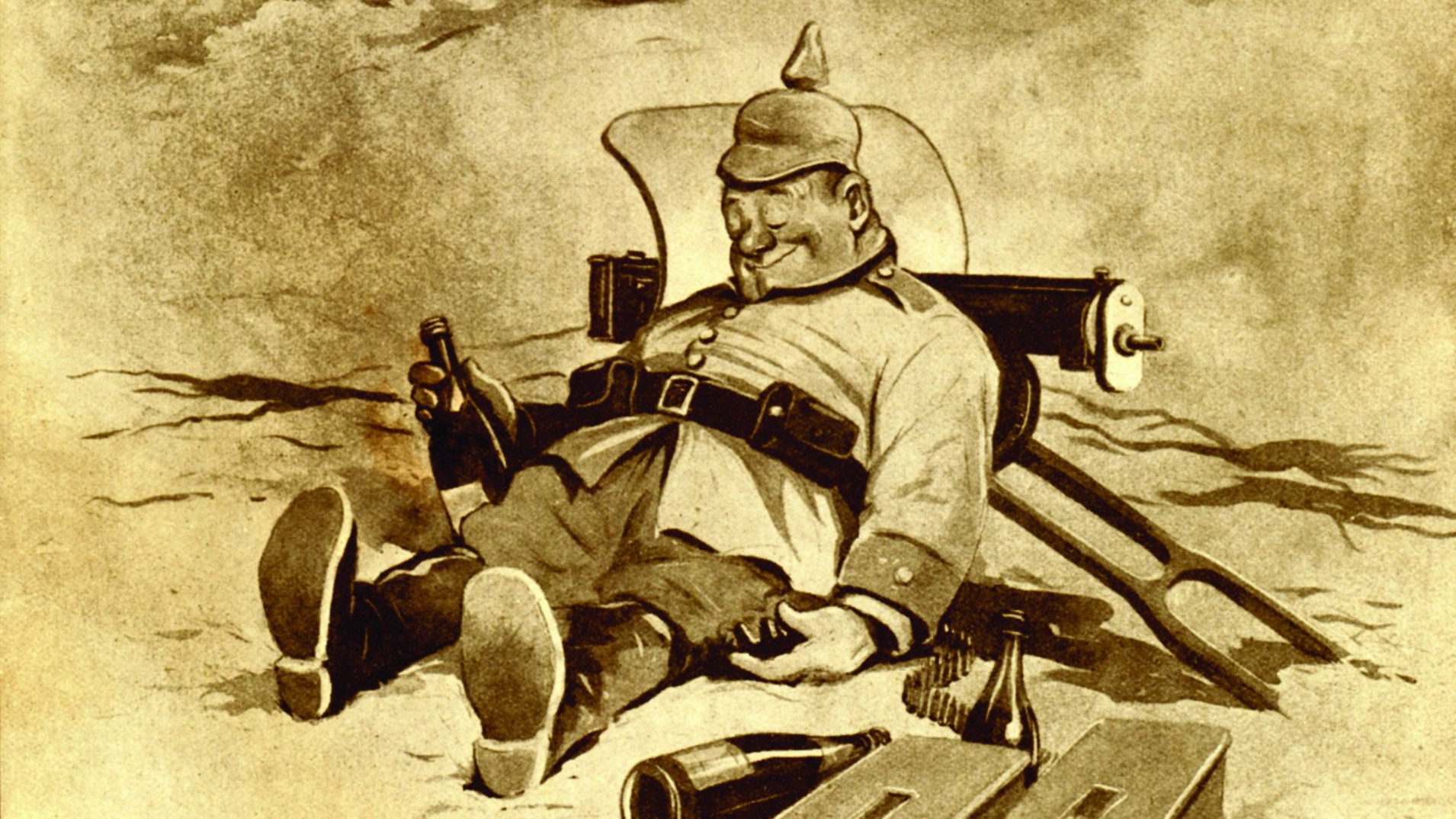
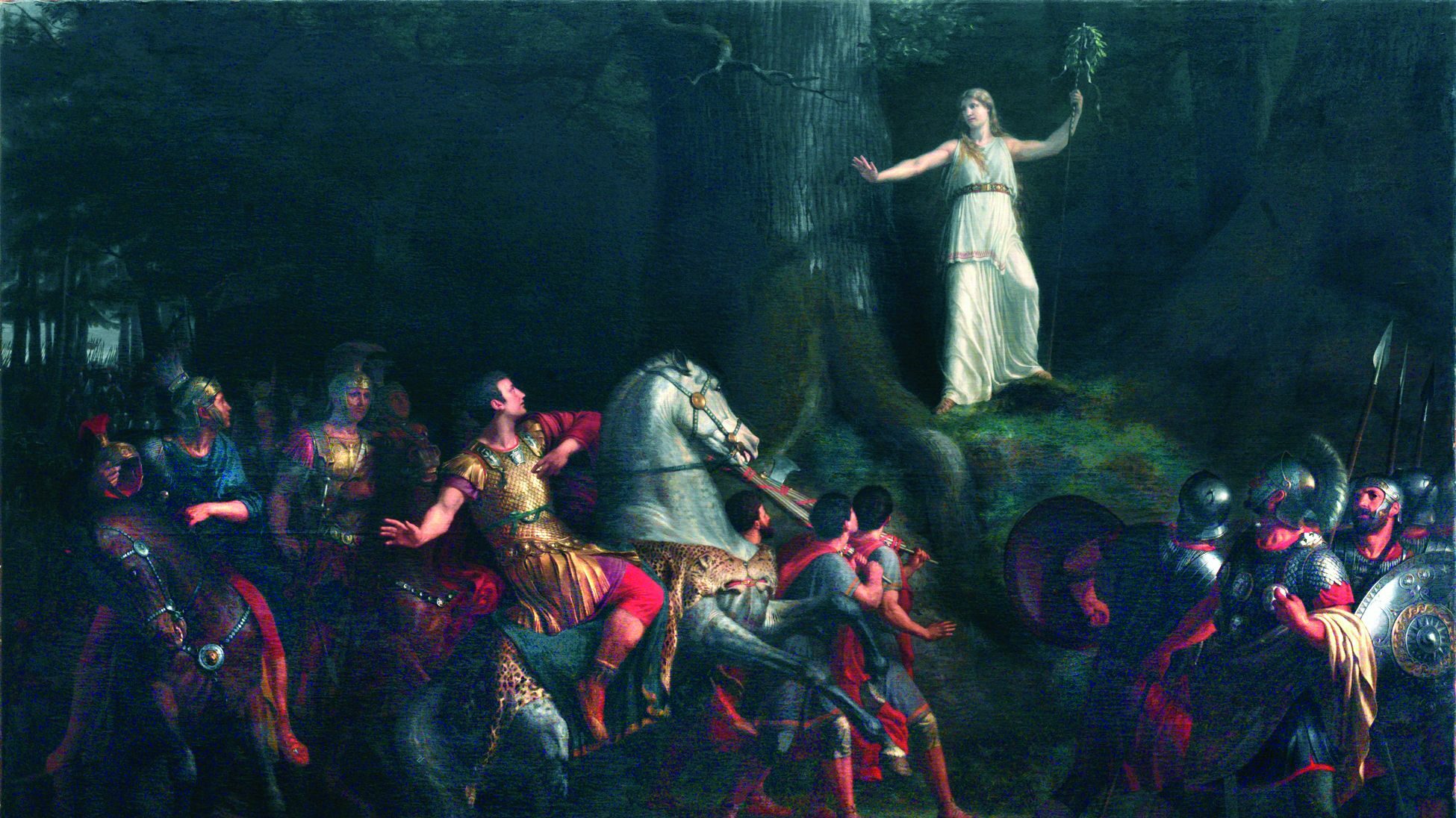
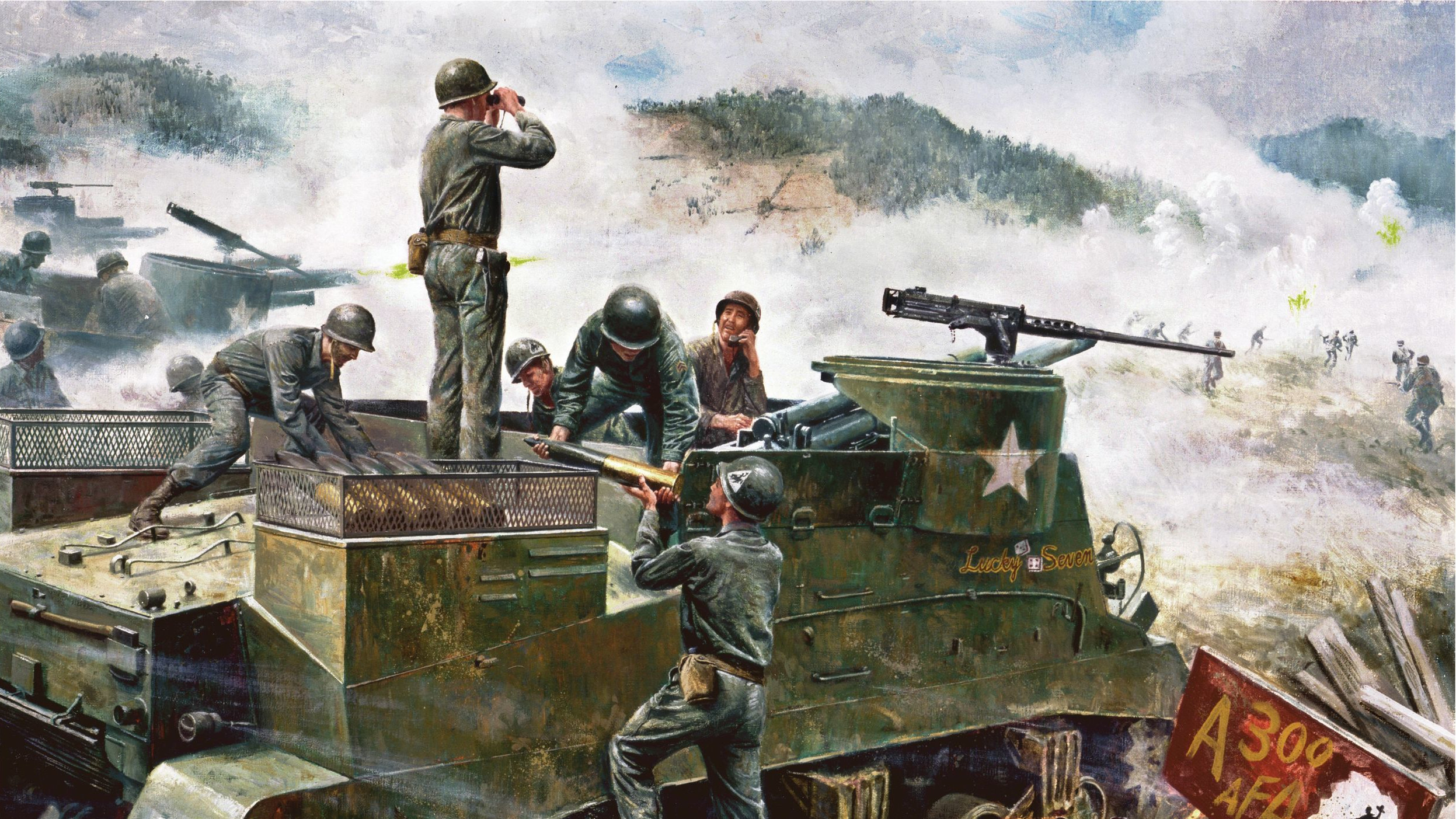
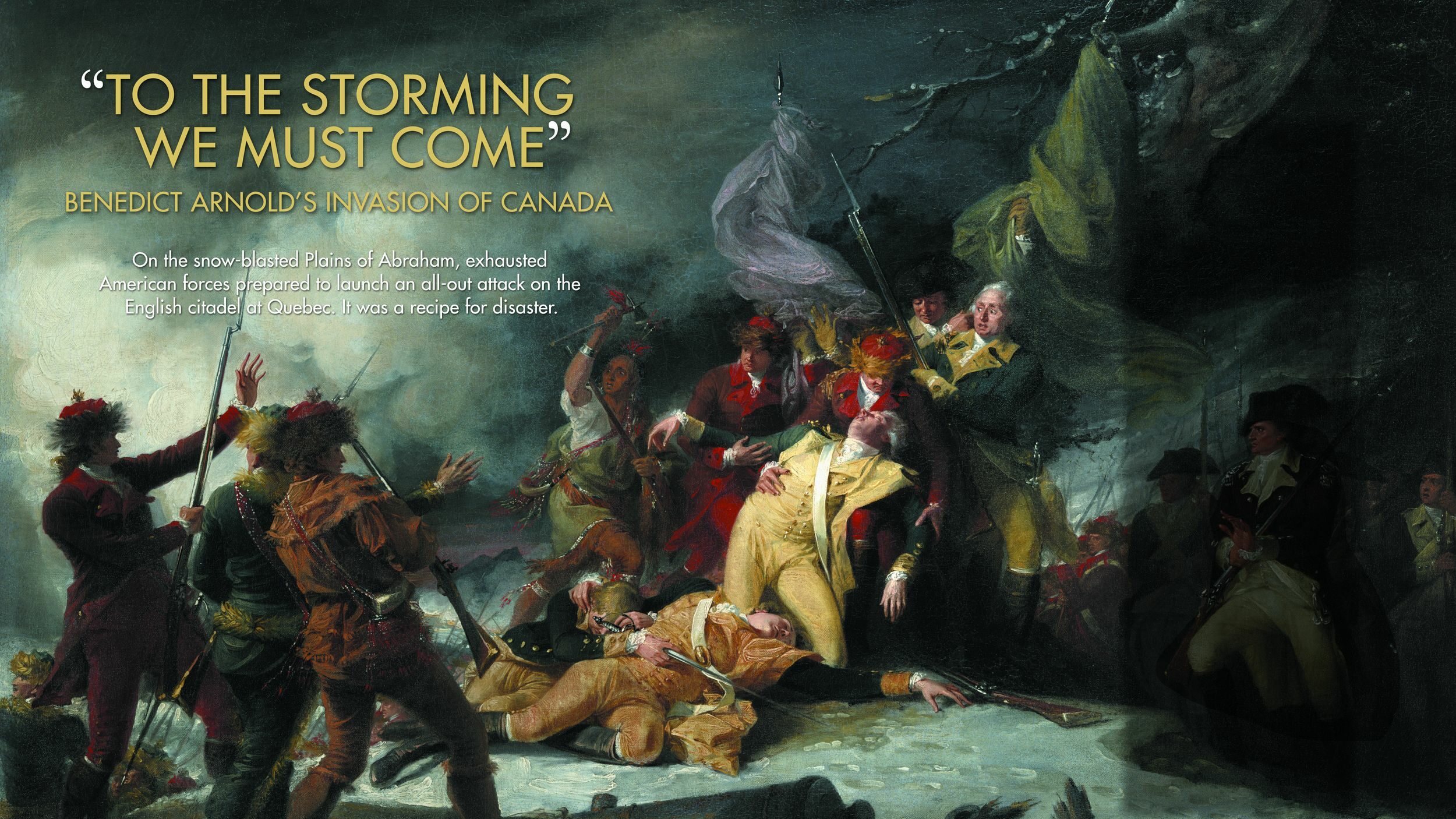
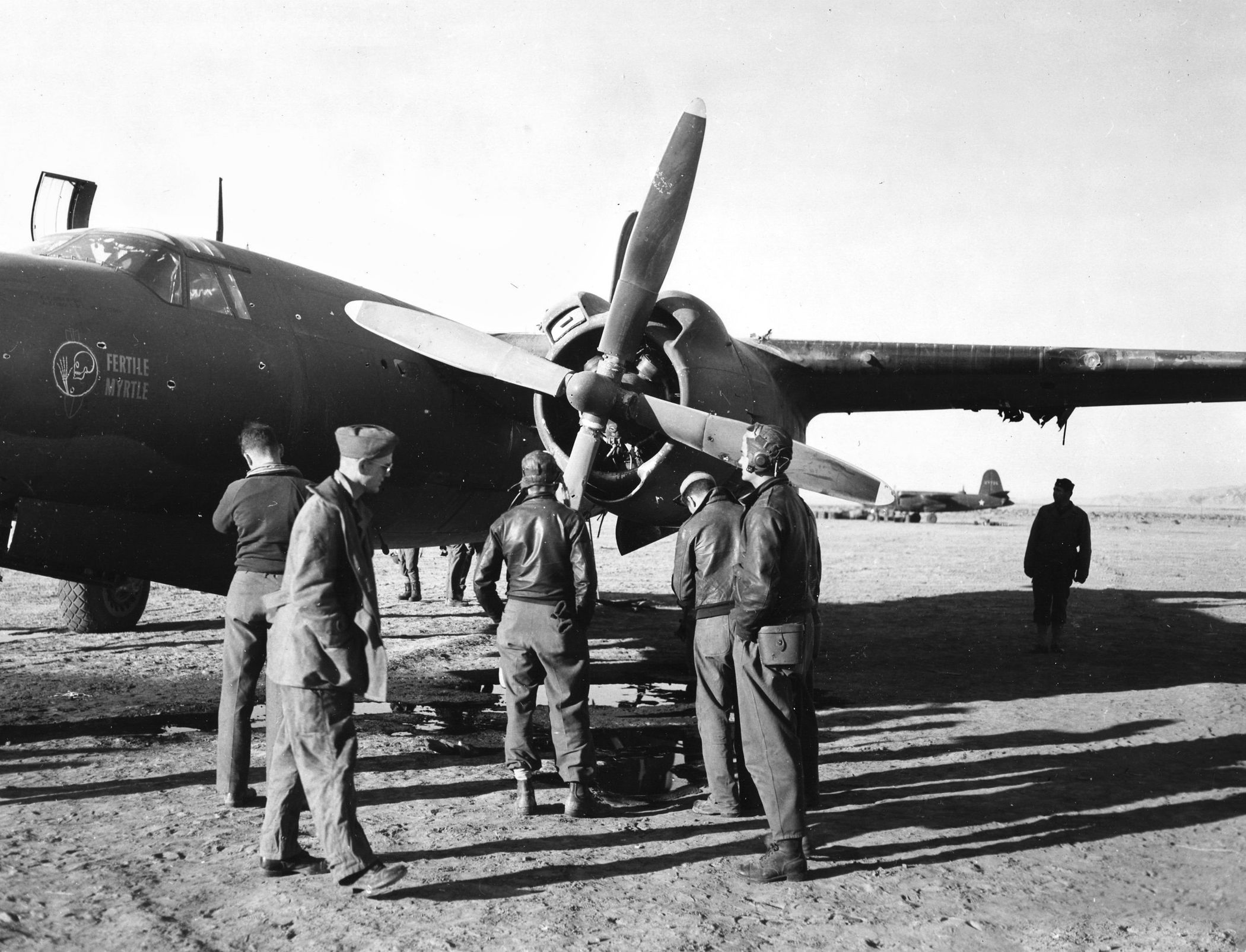
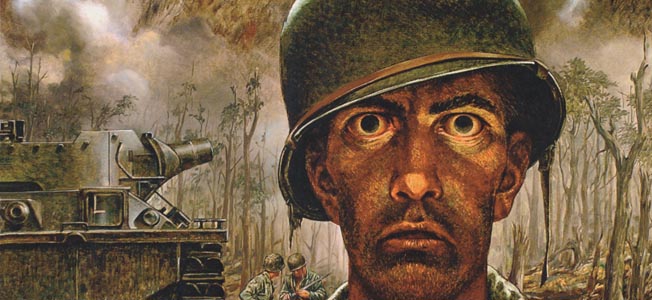
Join The Conversation
Comments
View All Comments